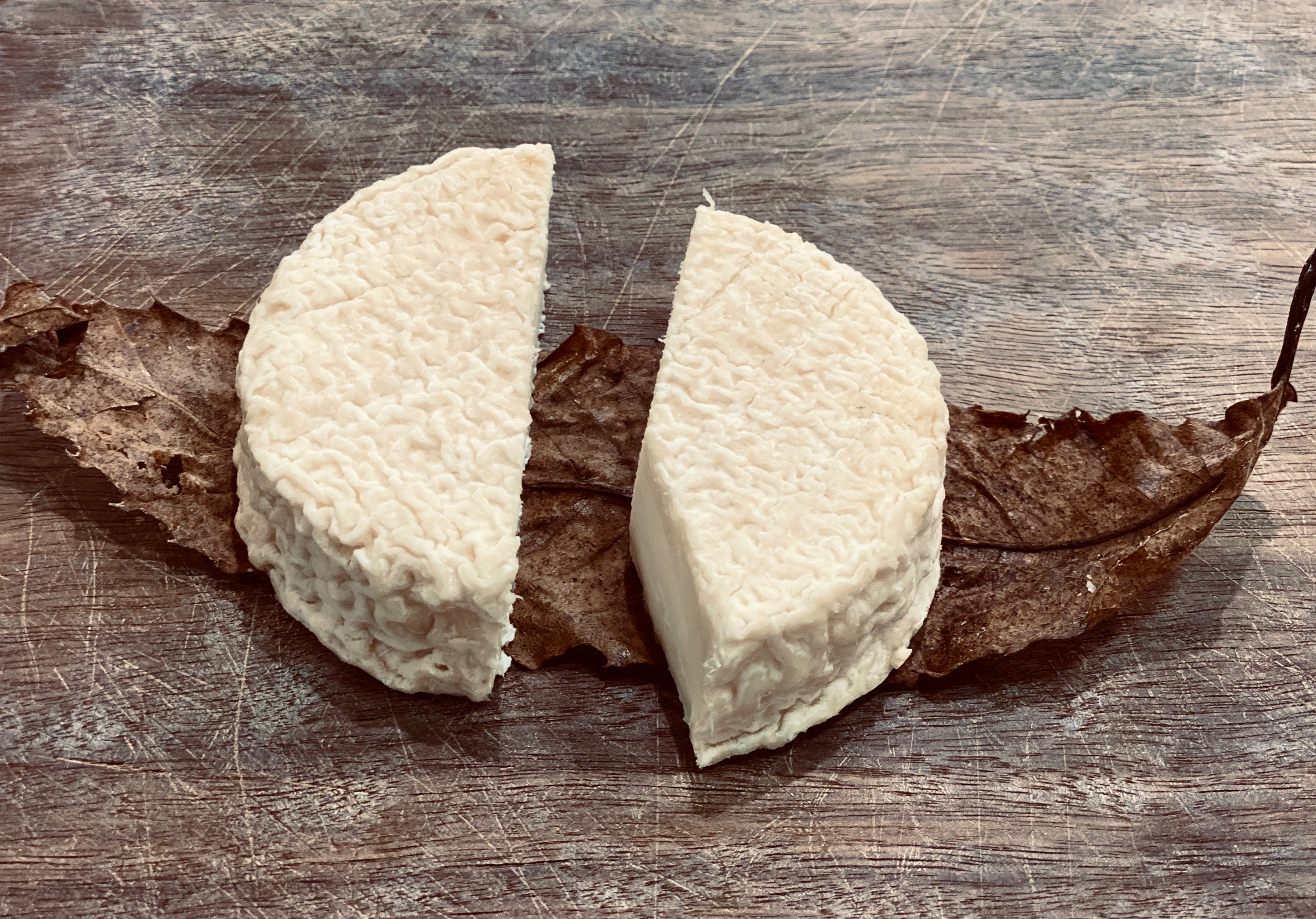
A Few Important Tips
Goat’s Cheeses can be classified in approximately 6 categories
Fresh Chèvres (Goat's Curd Type)
This first category includes Goat’s Curd and Fresh Cheeses (Woodside Chèvre).
Very high in moisture content, their texture is silky and soft. The paste is ultra white and sometimes ashed or flavoured with various herbs, garlic and spices.
In general, we like mould as it is flavour. But we dont want to see any mould on this type of cheeses!
Bûche de Chèvre (Goat's Log)
Bûche de Chèvre is different from Sainte Maure logs. It has a white and fluffy mould (similar to camembert) and presents a very fine texture with pronounced goat’s milk flavour. It also have a mild acidity with citrus lingering notes. A very easy and delicious cheese to eat as is or to cook with.
White Mould (Goat Camembert)
Goat’s Camembert has a creamier texture than the Bûche, and like its counterpart, the closer to the date you get, the stronger the flavour and the creamier the texture. You can find beautiful examples of this family with Lilyarra Goat from SA, Milawa from Victoria, and Coal River from Tasmania.
Chèvres Affinés (Traditional Goat’s Cheeses)
In France, these little beauties date back to the 8th century, when the Saracens intended to invade France up to a point. Once in Poitiers (South of the Loire River), and while retreating hastily, they left their goats behind, and with it the recipes they used to make their traditional cheeses.
Today, you will find some formidable examples such as Chabichou du Poitou, Ste Maure, Valençay, Crottins… The Italians also have some very delicious traditional goats milk cheeses (Brunet).
The common thread for these cheeses is their unique and very beautiful wrinkly rind created in part by a famous bacteria called Geotrichum.
Their texture is rich, creamy underneath the rind and chalky/fudgy in the middle. They all have a very clean and delicate acidity and some attractive citrus notes.
Semi-Hard/Hard Goats Cheeses (Tomme Style)
If you think goat’s milk is too strong, I urge you to try it through the semi-hard cheeses. A Goat’s Tomme such as La Dame from Barossa Cheese Company will deliver caramel and sweet milk notes rather than the citrus ones you find in the soft cheeses.
We also have beautiful examples through the Pyrenees - Chevre d’Aquitaine is one of our staff favourites. The Spanish do it well too with their Queso de Cabra from La Mancha.
Goat’s Blue
These are a little bit harder to put our hands on. But Milawa is doing a very good job with their Mt Buffalo Blue. Again, the sweetness of the milk will balance out the salt content in any blues. Worth trying for sure!
Affinage plays a very important role in the Goat’s Cheese Life
If you are a goat’s milk cheese fan, you know that choosing the perfect goat’s cheese involves understanding their various stages of affinage.
If you go to a French outdoor market, you will often find small producers with a wooden table and the same goat’s cheese at different stages of their life - from super fresh to super matured and dry and everything in between.
The reality is “they are all very good”. So up to you to decide which one suits your palate the most.
The younger the goat’s cheese, the softer its texture and the milder it tastes.
The more mature it is, the more intense its flavour is and of course, the dryer its texture.
As you can see, there is a lot to experiment with this unique category of cheese.
And how lucky are you that you can indulge with us at Smelly Cheese Co!

Comments (0)
Back to What's Happening in our World of Cheese